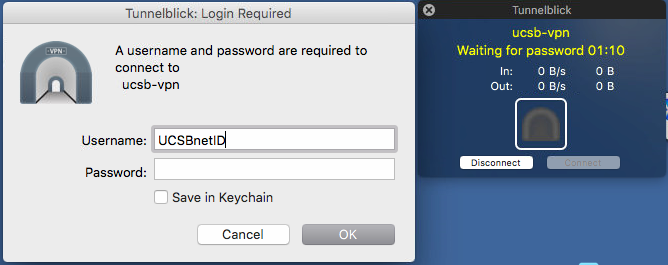
- Tunnelblick configuration file with embedded cert zip file#
- Tunnelblick configuration file with embedded cert manual#
- Tunnelblick configuration file with embedded cert full#
- Tunnelblick configuration file with embedded cert Offline#
- Tunnelblick configuration file with embedded cert windows#
Additionally, if you are running OpenVPN via a wrapper such as the official Access Gateway or a third-party SSL VPN gateway, it may have its own way of distributing this information (e.g., via a web page hosted on the device), but that is out of scope of this article.
Tunnelblick configuration file with embedded cert zip file#
Since keys can be embedded in OpenVPN configuration files, one option is to email each user their config file in an encrypted zip file and transmit the password to them in another manner such as SMS, but overall this is something that will have to be decided for each individual environment depending on existing infrastructure and policies. Key distribution can also be a challenge.
Tunnelblick configuration file with embedded cert Offline#
The root CA in particular should be stored offline and/or on a hardware security module to prevent theft. Be very careful with the CA data, especially if you begin to use it for other purposes than just your OpenVPN setup. If not, you can use Step, XCA, or the OpenVPN easy-rsa scripts.
Tunnelblick configuration file with embedded cert windows#
If you’re running a Windows Active Directory domain, you already have a certificate authority that you can use for this, so talk to your AD admin and see how they can help you. In short, you’ll need a certificate authority and the ability to distribute certificates and keys to servers and clients securely. The primary prerequisite for OpenVPN is a public-key infrastructure (PKI). To embed them, you can use an XML-like tag such as this: (contents of PEM certificate go here) Prerequisites This is advantageous since it reduces the number of files you have to manage. Some options that accept file paths as an argument, such as the client certificate, can be embedded inside the configuration file.
Tunnelblick configuration file with embedded cert manual#
Double quotes are used for strings, and lines that begin with # or are comments the OpenVPN manual recommends that # be used for text comments and be used to comment out directives, but the two characters are otherwise interchangeable.


Configuration directives are given one per line, with arguments (if any) for each separated by spaces. Configuration parameters are passed either through the command line or, more commonly, through a profile file, a plain text file with the. OpenVPN operates using a client/server model with the same configuration system used for both.

There will be a follow-up article after this that gives some points of improvement for extra security depending on your organization’s needs, such as using physical tokens for authentication. Reading the background and rationale portions of each section can help you find the options in case they’re not named exactly the same way as in the community OpenVPN edition.Īt the end of the guide, you’ll have an OpenVPN configuration that uses all modern best practices (known at the time of this guide’s publication) while remaining compatible with all common platforms. If you’re using an appliance, consult the manual and the configuration interface to try and find equivalent options and configuration settings. If you’re using the OpenVPN community edition (the version that’s available in Linux package managers and on the website), you can copy and paste the directives (customizing as necessary) and build your configuration that way.
Tunnelblick configuration file with embedded cert full#
Each section will include some background, an explanation of the rationale for the specific options it recommends, and a sample configuration snippet that implements it, culminating in a full sample configuration file at the end of the article.

This article will cover a number of hardening options and general best practices broken down into related sections. This article aims to be a one stop, up-to-date hardening and configuration guide for OpenVPN in 2020. On top of that, OpenVPN is a pretty old project so there is a lot of advice hanging around on the Internet that is either out of date, incomplete, or just plain wrong. OpenVPN has a pretty staggering amount of them, some of which are deprecated or have subtle security impacts that are not well explained. This is the opposite of what you want on a corporate VPN since you’re in control of both ends of every connection, you can much more tightly control the clients and can therefore choose options that maximize security. Most OpenVPN configurations lean heavily on the OpenVPN defaults, which are designed to be widely compatible rather than maximally secure. Let’s clean up this mess Why Hardening OpenVPN is Necessary


 0 kommentar(er)
0 kommentar(er)
